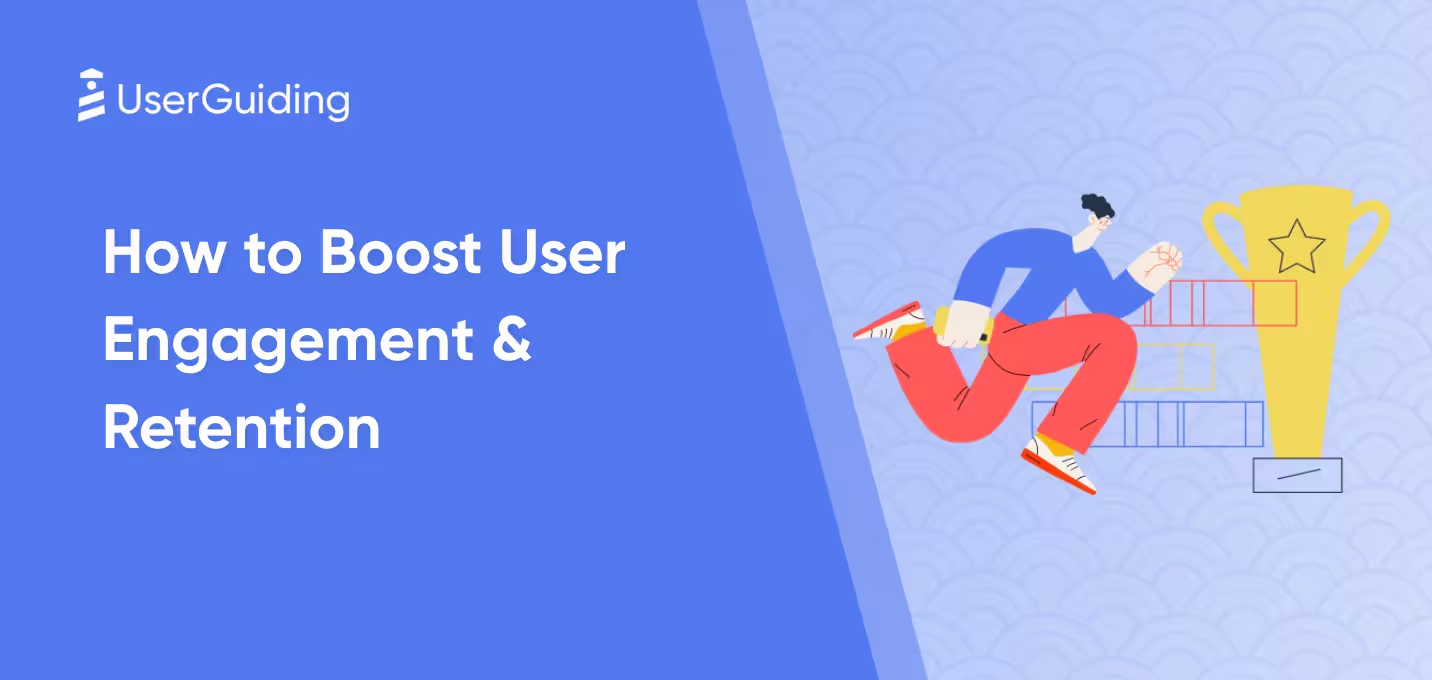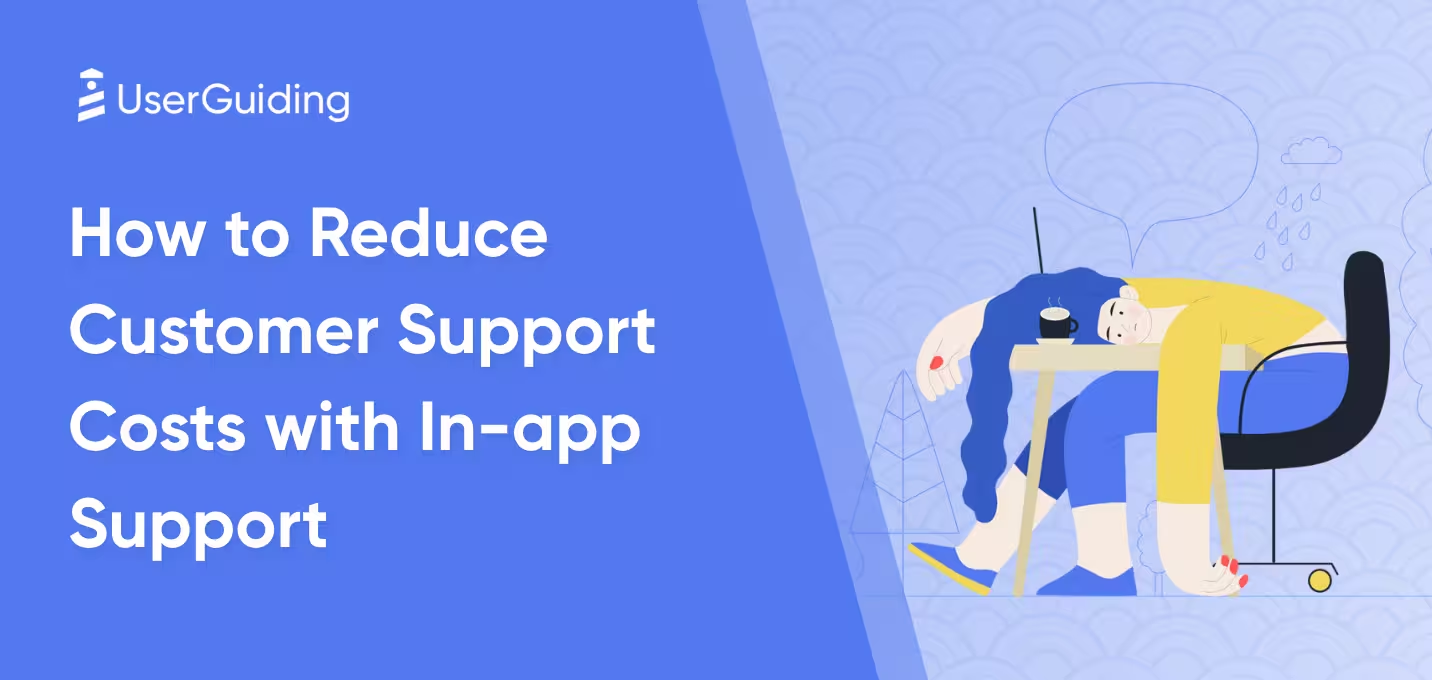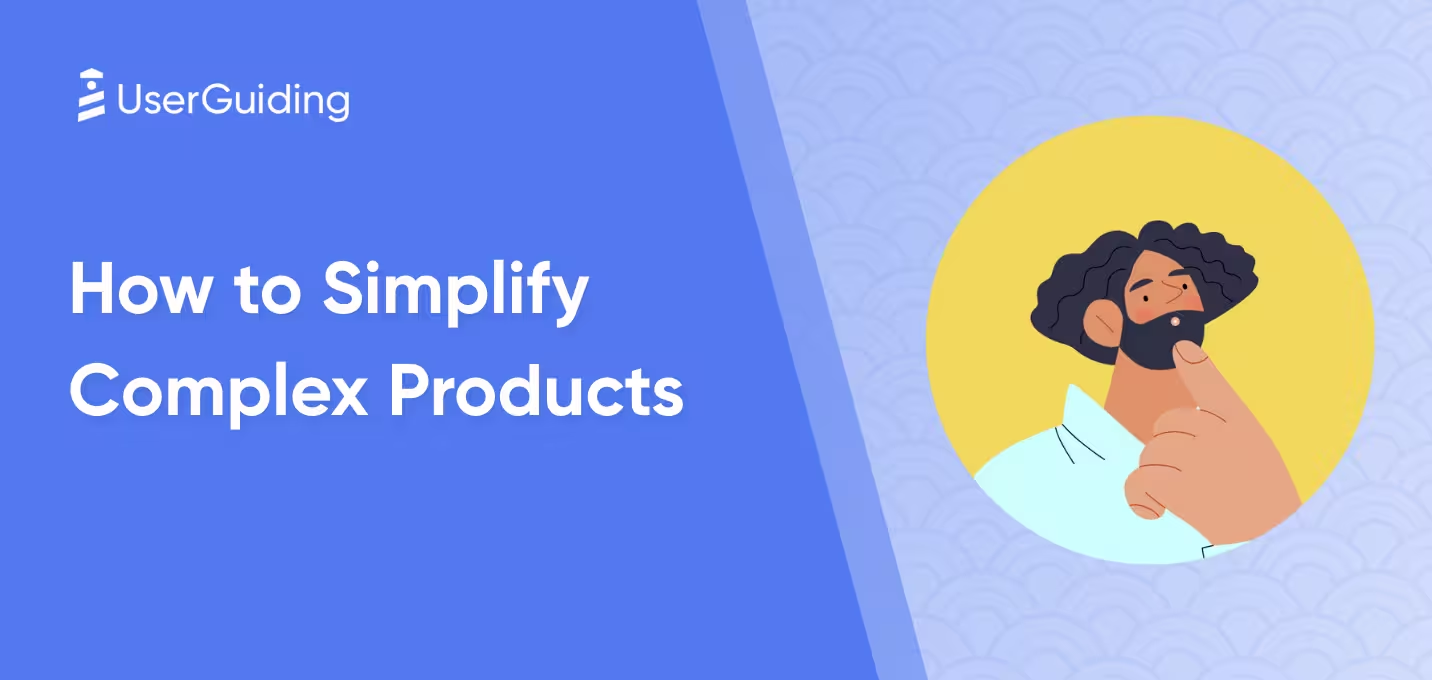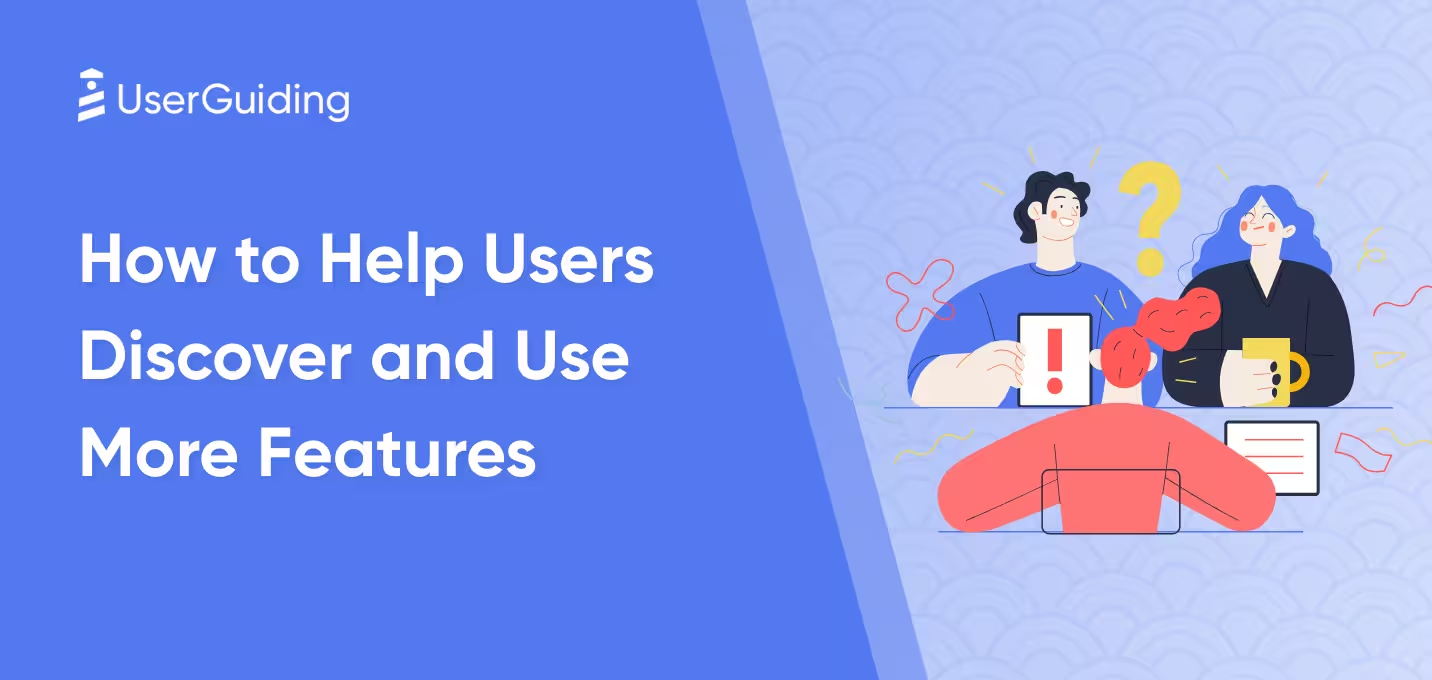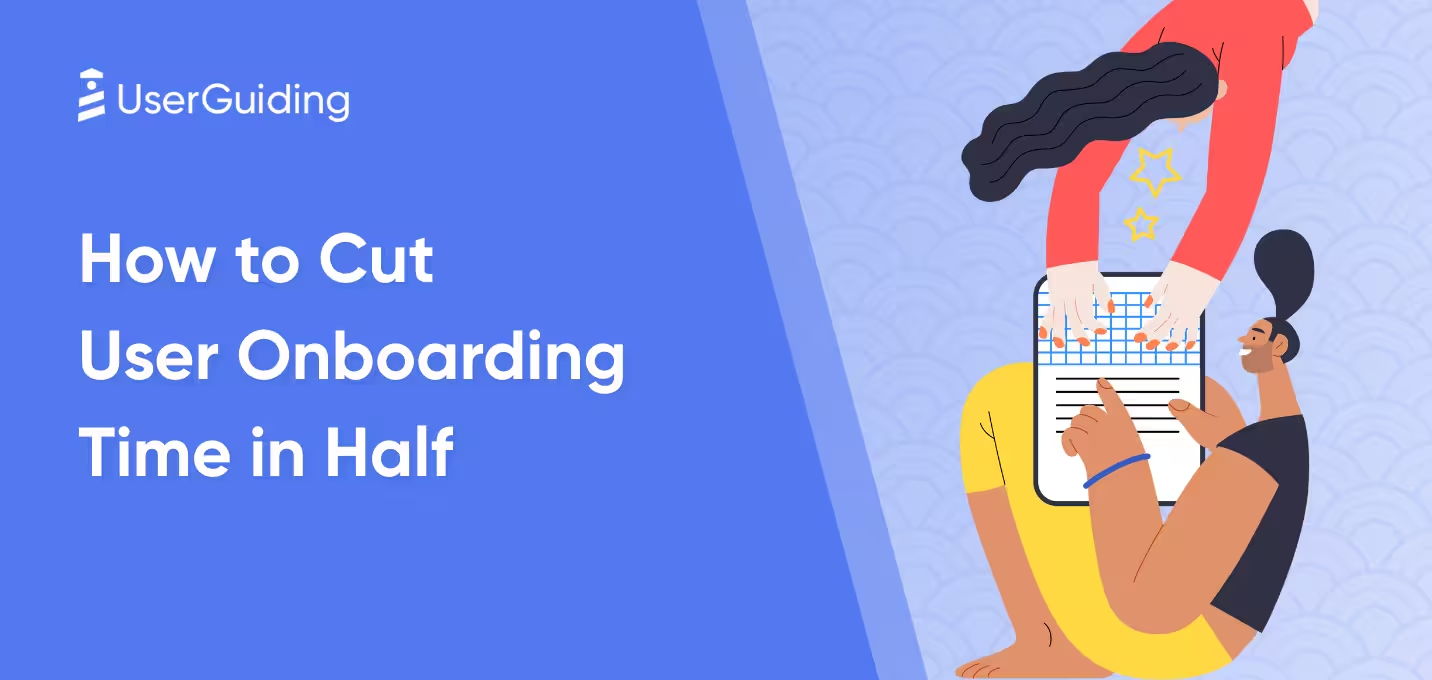

User journey, user journey mapping, user flow, and many more…
These terms are probably a part of your daily life now. But if I told you you’re missing another one that is extremely crucial for your business?
Don’t roll your eyes just yet. Yes, I’m talking about user journey monitoring.
Why this term? Because it is a holistic approach that not only informs the entire user journey but also uses best user experience practices as well.
If you don’t believe me, believe this statistic: 88% of online users say they wouldn’t return to a website after having a bad user experience.
In this article, you’ll learn:
- What user journey monitoring is
- How to leverage it for your business
- Best practices and tools for monitoring user journey
Here is a TL;DR section with all the juicy details👇🏻
TL;DR
- User journey monitoring focuses on analyzing user touchpoints and interactions a user has with an organization.
- Structure the journey mapping wisely: Before collecting data and making changes to your product, take time to map out the entire user journey. Don’t be afraid to experiment with different methods like synthetic monitoring or real user monitoring (RUM).
- Don’t just collect data: Riley Newman from Airbnb states that data science is an “act of interpretation,” so sit down with stakeholders to identify trends in your community.
- Use interactive elements in your onboarding: User onboarding doesn’t have to be boring handbooks, pre-recorded videos, or documentation. If a user cannot personally engage with the product, your monitoring will not give you accurate data. Use interactive elements like tooltips and onboarding checklists to create a unique experience.
What is User Journey Monitoring?
Before we define what user journey monitoring is, we should first talk about what makes a user’s actions a journey.
David Winstone highlights that user journeys can have a wide range of interactions, such as
- ordering a new smartphone,
- lodging a complaint,
- processing payments, or
- booking a vacation.
But that’s not all.
User journeys actually involve actions that are invisible to the users themselves. Like a user booking a demo call or browsing your website. They might not be aware, but you have to.
To put it differently, user journeys only become important when
“something goes wrong. It’s at that point that the complaints are made, or calls to the call center happen, and more often than not — it’s only at that point when an organization realizes that there’s a problem — when customers start complaining.”
I can hear you scratching your head. You’re probably wondering, “How can I know there’s a problem to fix before the problem actually starts?”
That is where user journey monitoring enters the scene.
User journey monitoring is to track and analyze user interactions and experiences while engaging with your product, service, or system.
Ideally, you want to track these interactions across various channels, such as websites, mobile apps, call centers, and interactive voice response (IVR) systems.
This helps you visualize the user journey in its entirety, identify pain points, and optimize your service as feedback rolls through.
4 Common Examples of User Journey Monitoring Data
It’s all fun and games until you actually have to sit down and analyze user journey monitoring data. I’ve created a list with real-life examples to show you how you can step up your analytics game.
Check them out below👇🏻
1. Page views and click paths to identify drop-off points
Let’s say that you have an e-commerce website that has been selling well. Recently, though, you notice that something has changed:
You look at your customer journey analytics and see that users frequently navigate from your homepage to product categories. The problem? They drop off before reaching the checkout page.
You see spots before your eyes; your hands are sweating. It’s not a great picture.
Without sales, you cannot stay afloat. So, how can you leverage this data to take action? You can certainly work with third-party organizations or experts, but the answer is right in front of you!
Open your website and look at it for a solid minute. Act like a user and use product pages to add things to your cart. Go to the checkout page. What do you notice?
Maybe your checkout process was not as smooth as you thought it was. Maybe there’s a bug that erases products from your cart.
Well, it’s time for a redesign, then!
Collaborate with your product design team to address these issues. If everything works well, though, you can go to your marketing team to create targeted promotions on product pages to make your products more visible and appealing.
Here’s an example from YouTube:

YouTube shows a simple tooltip to promote their free 2-month Premium app when you’re watching a video.
It captures the user’s attention at the right moment: When they are using the platform and engaging with the content.
This way, the promotion feels more relevant to the user.
The No-Code Way for Tooltips: UserGuiding
Waiting for your development team to design, code, and embed the code can be a hassle when you only need a single tooltip.
No-code tools like UserGuiding can save you a lot of time and win those users back easily.

Simple design, right placement, and clear message. Voila!
You get yourself a perfect interactive tooltip that will fit your business perfectly.
You can even customize your tooltips with GIFs, visuals, links, branding colors, and buttons!
Itching to try it for yourself?👇🏻
🚀Click here to see UserGuiding’s tooltips in action🚀
2. Session duration to understand the most engaging content
Imagine that you have a content-based platform. You write articles, have guest posts, do interviews, and update your following regularly.
In other words, you’re giving your all to this website. Then something happens.
You see that users usually spend an average of two minutes per session but some articles keep them engaged for five minutes.
It is easy to go: “Hey, I’m doing great!”
However it takes an analytical approach to see that certain topics resonate well with your audience.
Once you see it, you can never unsee the well-performing content, so you will write and publish more content in those areas to enhance overall engagement.
3. Conversion rates to analyze trial-to-paid paths
If you are working for a SaaS company, you probably know the struggle behind converting free trial users to paid plans.
Send emails, send promotions, point to resource centers, trigger in-app notifications to make them come back to the product…
You are also probably aware that if only a small percentage of users convert to paid plans, the cost of acquiring new users will rise dramatically, which will make it harder to maintain profitability.
If you leverage user data monitoring in the best way, you will not have to worry about this problem.
Looking at user interactions within the app will help you identify which features are most and least used and test your user segments better. This way, you will know for sure that users fully understand your product’s value during the trial.
4. User flow analysis to improve user onboarding
If your users frequently start the onboarding process but abandon it before completion, it’s time to consider user journey monitoring seriously.
One of the best ways to do that is by mapping the user flow.
Start by analyzing your current user flow. Mark key touchpoints where users actually interact with the product (not where you think users interact with it).
Common touchpoint examples are setting up their profile, exploring features, or accessing help resources. Pay attention to those.
Then, look closely at your flow map to pinpoint where users commonly drop off. For instance, do many users abandon the onboarding after the first video tutorial?
Maybe you should try an onboarding checklist that shows users how to access features with or create interactive elements like hotspots.

Sure, video tutorials are helpful. However, interactive elements actively involve your users and encourage them to participate rather than passively watch.
Once you identify where users lose interest or face difficulties, start testing your brand-new and interactive user onboarding experience.
If you use third-party tools like UserGuiding, the analytics dashboard will be your new best friend. It’ll track how much users engage with your new flow.
If you choose an in-house option, make sure to regularly monitor key metrics like conversion rates and user engagement to see if your new onboarding is a success.
Why is User Journey Monitoring Important?
Now that we’ve covered real-life examples, it’s time to discuss why you should care about user journey monitoring.
Here’s what you should know:
Understanding user pain points
User journey monitoring is all about understanding how users will be affected by your product. This includes pain points, too.
Knowing how well (or not) your user is served can help you leverage that data to turn a negative experience into a positive one.
If you can’t simplify your registration process or enhance feature accessibility, then users will head off to one of your competitors.
User journey monitoring gives you a bird’s eye view of the entire user experience through customer data so you can react to problems or improve things in a timely manner.
Identifying conversion bottlenecks
It is so easy to lose sight of how users interact with your product. User journey monitoring helps you focus on and create a functional system that is user-centric.
By analyzing user interactions across the entire journey, you can pinpoint specific stages where users experience friction, whether it's during the registration process, checkout, or feature discovery.
Maybe you have complicated sign-up forms, unclear calls-to-action, or slow-loading pages, and you did not even know!
There’s no way around fixing these issues. You have to sit down and analyze the user journey, see where there’s dissonance, and make incremental improvements to the user experience.
Don’t assume your teams are automatically notified of these bottlenecks. Monitor user experience so you know everything runs without errors.
Measuring customer satisfaction
User journey monitoring means having an ongoing evaluation system. It allows you to collaborate with the right teams to ensure that users continue to choose your product or service.
If user journeys were easy to master, we would see a higher number of businesses having stellar user reviews.
But this is not the case. User journey monitoring gives you a competitive edge to functionally and emotionally engage with your users.
By tracking how users navigate through your platform—from initial engagement to post-purchase interactions—you add a human element to the entire user experience and capture real-time sentiments.
5 Core Benefits of User Journey Monitoring for Businesses
Not completely sold on user journey monitoring yet?
I think I can change your mind. Check out these core benefits👇🏻
1. Improved customer experience
Did you know that companies that do well in customer experience outperform their competitors by around 80%?
The stellar customer experience you’ve been waiting for will not just come knocking at your door. If you want to keep users coming back for more, you have to plan, outline, and research.
Let’s take a look at one of the masters in the game—Apple:

This is one of my favorite examples to talk about when it comes to customer experience because it gets the job done in the simplest way possible and shows what lies in the core of Apple: Everything starts with customers and technology is built around them.
This shows unquestionable value to the customer. And that is why people all around the world wait for new Apple product releases and events every year.
Apple did not come up with this concept out of the blue, though. Apple ID and NPS surveys take care of that. In other words, user journey monitoring maintains this successful branding.
Apple collects data during the registration process through Apple ID, allowing people to create detailed customer profiles. NPS surveys after making a purchase through emails or polls also help to improve their customer experience.
2. Increased conversion rates
Amazon is a prime example of effective user journey monitoring. (See what I did there?)
According to a study by EMARKETER, Amazon will surpass 40% of US e-commerce sales in 2024, which equals a total of $491.65 billion.
From hassle-free returns to one-click checkout and estimated arrival information, Amazon changed the online shopping experience for millions of shoppers.
This wasn’t always the case.
Before Amazon introduced the one-click checkout process in 1997, which the company now patents, a surge of people abandoned their carts during the checkout phase.
User journey monitoring—in this case, meticulously tracking user behavior, from product searches to checkout processes—helped Amazon report a substantial increase in completed purchases, significantly boosting their overall conversion rates.
3. Enhanced product development
Slack, the popular collaboration tool, makes it hard for us to look away when it comes to user journey monitoring.
The company keeps an eye on how users navigate the platform, which features they utilize most, and where they encounter challenges.
For example, Slack’s VP of Product, Noah Weiss, and Senior Staff Product Designer, Anna Niess, talk about how the unexpected global pandemic gave rise to one of the most popular features of the tool: Huddle.

Here’s what they have to say about the development process:
“We were doing these pulse surveys every month of something like 10,000 knowledge workers. They told us that the number one thing that was suffering was a sense of belonging … So, one big starting question was how do you help recreate some of the serendipitous ad hoc conversations that used to happen in the office in a lightweight, impromptu, low-stress, unscheduled, organic way?” — Noah Weiss
“At the end of our pilot, we had more than 100,000 people testing it. But it started with only ten people. Every time, we would polish it up a little bit, hear from people, refine the experience, do another build, and expand the audience. It was figuring out what sticks, what doesn’t, and learning what the primary use cases were.” — Anna Niess
Make sure to read the rest of the interview here to get a near first-hand experience of what makes Slack amazing in product development.
The rest is… history. Responding to a global challenge (financial, medical, and emotional) with Huddle happened because Slack emphasizes the importance of understanding user interactions to inform design decisions.
As you hear from the top names of the company, their iterative process relies heavily on user feedback.
Slack teaches us that user journey monitoring does not have to be complicated. Creating meaningful experiences for customers starts with prioritizing real user needs.
4. Optimized marketing campaigns
Let’s look at a very recent example: Charli XCX’s BRAT summer.
You might have probably noticed how slime green took over the entire social media this summer.

Check out Worklife’s overview of the BRAT summer to see the genius behind the “viral” release that affected everyone from fashion to politics.
Since the album’s release in June, BRAT has generated $22.5 million in media impact value (MIV).
There’s a reason why she “never go home, don’t sleep, don’t eat, just do it on repeat”.
Charli’s team undoubtedly gained valuable insights into what resonated most with her audience by analyzing fan interactions across social media platforms and streaming services.
For instance, they leveraged TikTok, where Charli’s content, including teasers and behind-the-scenes glimpses, created significant buzz.
Especially with the rise of the “core” aesthetic on the platform with Gen-Z, the marketing around “BRAT summer” took a “core” aesthetic life on its own.
From the BRAT wall to dance trends (the infamous Apple dance, anyone?), monitoring engagement metrics helped her team identify which clips were most popular, allowing her to amplify those messages through targeted promotions.
The use of engaging visuals and interactive elements—Charli’s bratgenerator.com allowed fans to create and share their own BRAT-themed content) took community empowerment to the next level.
5. Better decision-making
Airbnb’s product model is another great example of user journey monitoring done right.
Riley Newman, head of data science at Airbnb, explains how Airbnb approaches data science: Data isn’t numbers; it’s people.
He believes that “data science is an act of interpretation – we translate the customer’s ‘voice’ into a language more suitable for decision-making.” Airbnb uses data to “identify trends across the community,” and the trends “inform decisions about where to drive the business.”
Over time, they created a 4-layered system to assess the quality of a decision:

They start by learning the context of a problem, then create a plan, design controlled experiments like A/B tests and operational market-based tests, and evaluate the results of the experiment.
How does it look in real life?
Take a look at their location relevance example where Airbnb’s machine learning models “interpret signals from one set of community-members to help guide others.”
The premise is that “a great listing in Berkeley shouldn’t come up as the first result for someone looking to stay in San Francisco.”
Where did this data come from? Purely from users’ behavior, aka through user journey monitoring. Why?
Because “it allows Airbnb’s community to dynamically inform future guests where they will have great experiences, and allows Airbnb to apply the model uniformly to all of the places around the world where their hosts are offering up places to stay.”
How to Implement User Journey Monitoring
If you’ve read this far, I think you’d agree that it is time to talk about the nitty-gritty of user journey monitoring.
Now that you know how effective this method is, let’s switch gears and look at a step-by-step breakdown of how you can implement this strategy into your business👇🏻
Step-by-step guide to implementing user journey monitoring
Step #1: Data collection
First, you want to make sure you’re collecting the right data. If there’s a problem during any part of your product’s user journey, keep data collection focused on that problem and its metrics.
Good analytics tools would collect and aggregate data for you, cutting down the time your team needs to spend sourcing data. Make sure that you’re able to track data in real-time that reacts to user behavior.
You should also be able to understand various user interactions from different perspectives, like product development, marketing, and sales.
Step #2: Data analysis
Once you’ve collected data, it’s time to link interactions with particular user behavior. Keep in mind that every user is in a different stage of their journey, so you’ll have to segment users into different categories to identify specific user groups.
You can use third-party customer journey analytics tools to create a comprehensive view of user interactions.
Step #3: Visualization and reporting
The last stage is data visualization and reporting. This process involves transforming raw data into visual formats that teams can easily understand and use to make informed decisions.
A funnel chart can illustrate the stages of the user journey within your product, highlighting where users drop off so you can start brainstorming to address the issue.
Heatmaps can also visually show where users click most frequently on a webpage, providing insights into user engagement so you can test the effectiveness of your landing pages and see if call-to-action items are easily visible to users.
Waterfall charts are also useful for visualizing changes in key metrics over time. It allows your teams to see how various factors contribute to overall performance, such as conversion rate changes due to specific marketing campaigns or site updates.
Top 3 Tools and Technologies for User Journey Monitoring
1. Miro - online collaborative whiteboard platform

Are you a visual learner and need mind maps, index cards, or journey boards with you at all times? Then, Miro is what you’re looking for.
Miro is an online collaborative whiteboard platform that helps you brainstorm and plan projects, ideal for remote teams. You can create a whiteboard from scratch and visually organize ideas, create diagrams, and collaborate in real-time.
You can connect Miro with other tools like Slack, Google Drive, and Jira to streamline workflows.
Pricing
Miro offers a free tier for businesses with a single workspace and up to 3 editable boards. If you have a large team, Business tier might be a better fit, which allows you to safely collaborate with secure guest access, and its pricing starts at $16 per member per month if billed annually.
2. UXPpressia - creating customer journey maps

UXPressia’s main function is to create customer journey maps, AI-powered personas, and impact maps. You can keep all your customer journeys and assets in one place with tags.
If you’re looking for a clear design and straightforward collaboration feature, then UXPressia might be the right one for you. Pre-designed templates can easily get you started as well.
Pricing
UXPressia has a free tier for small businesses that don’t have multiple customer journeys yet. If you are running up to 3 customer journey mapping projects with your teams, the Starter pricing tier might be a better tier for you, which starts at $160 per user when paid annually.
3. TheyDo - customer journey mapping

TheyDo is a customer journey mapping and experience management tool. You can visualize and understand the customer experience by mapping out various touchpoints and interactions a customer has with your brand.
One of the key features of TheyDo is that it allows you to see how one insight can be based on many journeys. You can link everything under one dashboard using their pre-made templates and structure a journey hierarchy.
Pricing
TheyDo offers a free tier for businesses looking to centralize their customer journeys. If you have multiple teams working together, their management tier starts from $35,000 per year.
For organizations that manage teams and also prioritize customer journeys, there’s a strategic tier available with custom pricing. You can contact TheyDo to get more information.
5 Best Practices for User Journey Monitoring
As we’ve established in this article, monitoring user journeys requires a combination of technology, strategy, and a deep understanding of user behavior.
Now, let’s look at some actionable steps you can take to get the most out of your user journey monitoring strategy👇🏻
1. Set clear key performance metrics (KPIs)
Well-defined KPIs are the bread and butter of user journey success. Why are you monitoring the user journey, and what do you hope to get out of it?
Keep in mind that one round of regular monitoring will not solve everything. That is why you should focus on metrics that align with your business objectives, such as conversion rates, user engagement, and customer satisfaction scores.
These metrics should also be specific, measurable, attainable, relevant, and time-bound (SMART) to provide clear targets for assessment.
2. Set up tracking mechanisms
Once you understand what your business needs, it’s time to collect data at every stage of the user journey. Not just the beginning or the end.
This could involve using tools such as Google Analytics, heatmaps, and session recordings to monitor user interactions across your website or application. Make sure that tracking codes are correctly integrated and tested to capture accurate data.
3. Analyze user behavior
As we discussed, collecting data is only the first step. You should regularly check for drop-off points, popular features, and areas where users encounter difficulties.
Which means that you actually have to communicate with users. This will show you how much you actually know about your product.
Qualitative feedback, such as user surveys and interviews, can provide valuable insights into user motivations and frustrations.
4. Compare data over time
Do the best you can with what’s available. But make sure that you have an established baseline in place to gauge the impact of specific campaigns or changes to your platform.
5. Monitor the impact of changes
Be patient and flexible. Your first-time user journey monitoring might not be flexible, but what’s important is continuously showing up for your users. Experiment with different approaches to determine what resonates best with your users.
Apply your learnings to the next iteration to improve your system so your user journey is optimized properly.
Key Takeaways
That’s a wrap! You have now unlocked the secrets of user journey monitoring, and it’s time to put the theory into practice.
User journey monitoring might be a completely new strategy for you, or maybe you were unconsciously monitoring your user journey. Now you want to establish a strong framework for all the steps you’ve been taking.
No single case study or practice can tell you exactly what to do, which is why I’ve covered a lot of different approaches. You can start small by adding interactive elements to your user onboarding and then build a structure later on.
Just don’t forget to communicate with your users and collaborate with your teams to deliver the best experience possible.
Frequently Asked Questions
What is user journey monitoring?
User journey monitoring involves tracking and analyzing the interactions users have with a product or service throughout their experience. This process helps businesses understand how users navigate their websites or applications, what challenges they face, and where they find value.
What tools can I use for user journey monitoring?
There are various tools available for user journey monitoring. Google Analytics, Hotjar, and Mixpanel are great for user behavior analytics. Miro, UXPressia, and TheyDo provide insights into how to visualize and map the user journey.

















.svg)
.svg)
.svg)
.svg)
.svg)

.svg)
.svg)












.svg)
.svg)




.png)




